After 12 years making Macs using the Motorola 680×0 family of processors (and one year with Lisa before that), Apple discontinued that last 680×0-based Mac in 1996, marking the end of the Vintage Mac era.
Power Macs
As always, Power Macs got faster, but 1996 saw no revolutionary jumps, just evolutionary improvements.
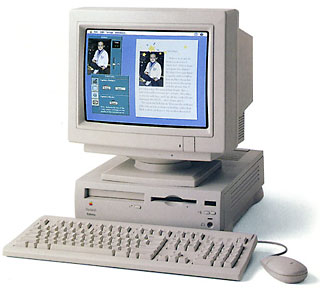 On the consumer front, the Power Mac 6300/120 came out in April with a 120 MHz 603e CPU. This Road Apple was replaced in October by the 6300/160, which had a whole new motherboard architecture that eliminated the bottlenecks in the x200 series.
On the consumer front, the Power Mac 6300/120 came out in April with a 120 MHz 603e CPU. This Road Apple was replaced in October by the 6300/160, which had a whole new motherboard architecture that eliminated the bottlenecks in the x200 series.
The Power Mac 7500 was replaced with the 7600, which used the more powerful 604e processor. It started at 120 MHz in April, then moved to 132 MHz in August.
The 8500 moved from 120 MHz to 150 MHz in April and 180 MHz in August. The 9500 went from 132 MHz to 150 MHz in April. In August, it was available in a dual-processor 180 MHz configuration (thanks to technology licensed from DayStar Digital) or with a single 200 MHz CPU.
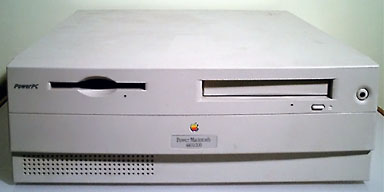 Apple’s attempt to take on the clones, the pedestrian Power Mac 4400, was introduced in November with a 160 MHz 603e processor.
Apple’s attempt to take on the clones, the pedestrian Power Mac 4400, was introduced in November with a 160 MHz 603e processor.
The Clones
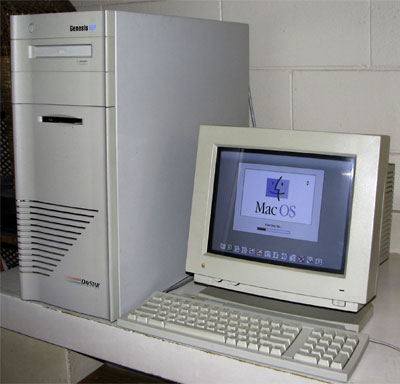 DayStar Digital produced the first dual-processor Mac, the Genesis MP 300, as a lower priced alternative to its quad-processor Genesis MP 600. In August, DayStar introduced the Genesis MP+, which used the more powerful 604e CPU. The model topped out with four 200 MHz CPUs at that point, and it would eventually peak with four 233 MHz 604e chips.
DayStar Digital produced the first dual-processor Mac, the Genesis MP 300, as a lower priced alternative to its quad-processor Genesis MP 600. In August, DayStar introduced the Genesis MP+, which used the more powerful 604e CPU. The model topped out with four 200 MHz CPUs at that point, and it would eventually peak with four 233 MHz 604e chips.
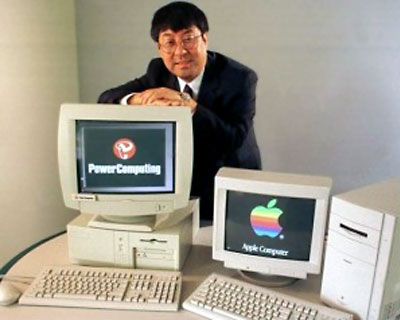 Power Computing introduced its PowerCenter and PowerTower models in April, adding its entry-level 603e-based PowerBase in August.
Power Computing introduced its PowerCenter and PowerTower models in April, adding its entry-level 603e-based PowerBase in August.
 Umax introduced its first SuperMac model, the S900 tower, in May, followed by the J700 desktop in July. These used CPU daughter cards and were built for pros. They were joined by the consumer C500 desktop and C600 minitower in August, which used 603e CPUs and had two and three PCI slots respectively.
Umax introduced its first SuperMac model, the S900 tower, in May, followed by the J700 desktop in July. These used CPU daughter cards and were built for pros. They were joined by the consumer C500 desktop and C600 minitower in August, which used 603e CPUs and had two and three PCI slots respectively.
 As someone who has used all of these models, I have to say I was impressed with SuperMac’s innovation – the S900 has six PCI slots plus a proprietary slot for a second CPU card, the J700 has four PCI slots, and both had lots of internal drive bays. The C500 was probably the lowest profile clone made and was the only clone to really go after the entry-level market.
As someone who has used all of these models, I have to say I was impressed with SuperMac’s innovation – the S900 has six PCI slots plus a proprietary slot for a second CPU card, the J700 has four PCI slots, and both had lots of internal drive bays. The C500 was probably the lowest profile clone made and was the only clone to really go after the entry-level market.
Umax also developed an innovative way to break past the limitations of a 256 KB 40 MHz level 2 (L2) cache on the C500 and C600 motherboards. It’s CacheDoubler sat in the CPU socket and provided 1 MB of 80 MHz L2 cache. In my own tests of a 240 MHz CPU, CacheDoubler improved the CPU score by 59% over using the motherboard cache.
 Motorola entered the Macintosh clone business with its StarMax 3000 and 4000 in September.
Motorola entered the Macintosh clone business with its StarMax 3000 and 4000 in September.
A Great Notebook
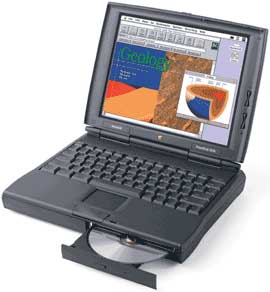 Apple introduced its first notebook designed from the ground up as a PowerPC machine. The PowerBook 1400 was the first notebook computer with a CD-ROM drive, which occupied an expansion bay. The 1400 had a small 11″ x 9.5″ footprint, nearly as small as the dual-USB iBooks (11.2″ x 9.1″), but the 1400 was much thicker at 2″. It was no lightweight at 6.6 to 7.0 lb. (depending on configuration), but its wasn’t overweight for its era.
Apple introduced its first notebook designed from the ground up as a PowerPC machine. The PowerBook 1400 was the first notebook computer with a CD-ROM drive, which occupied an expansion bay. The 1400 had a small 11″ x 9.5″ footprint, nearly as small as the dual-USB iBooks (11.2″ x 9.1″), but the 1400 was much thicker at 2″. It was no lightweight at 6.6 to 7.0 lb. (depending on configuration), but its wasn’t overweight for its era.
The PowerBook 1400 had one of the best keyboards ever used in a notebook computer, and its speeds ranged from 117 MHz to 166 MHz using a PowerPC 603e CPU. Although the PowerBook 5300 had offered an 800 x 600 display only in its top-end configuration, that resolution was standard on all versions of the 1400.
The 1400 had two PC Card slots, supported up to 64 MB of RAM, had room for an add-in modem or ethernet card (neither was standard), and the CPU could be replaced, which eventually allowed for G3 upgrades. The 1400 can handle IDE drives to 8 GB under any version of the Mac OS, and users have had success using larger drives with Mac OS 8.6 and later.
It’s the OS
The most significant news of the year revolved around the Mac OS, not hardware. In August, Apple announced the end of the Copland project, which was its code name for System 8.
In August, the last update to System 7.5 was released, bringing it to version 7.5.5.
After months of courting Be about acquiring BeOS, its powerful operating systems optimized for the PowerPC, Apple surprised everyone by purchasing NeXT in December 1996. The goal was to use the NeXT OS as a core for the “next generation” Mac OS.
The project, eventually named Rhapsody, bore some fruit in 1999 with the release of Mac OS X Server. The non-server version of Mac OS X would ship in March 2001 and came with all new Macs, although Mac OS 9 would continue to be the default operating system until January 2002.
The best thing of all for Apple’s future was that the acquisition of NeXT brought Steve Jobs back to the company he had cofounded after 11 years away. Over the coming years, Jobs would revitalize Apple and grow it far beyond its former greatness.
Next – 1997: Beleaguered, Mac OS 7.6 and 8, Killing Clones, and the First G3s
Keywords: #powercomputing #supermac #umaxsupermac #motorolastarmax #powerbook1400
Short link: http://goo.gl/UCVP8U
searchword: machistory1996

